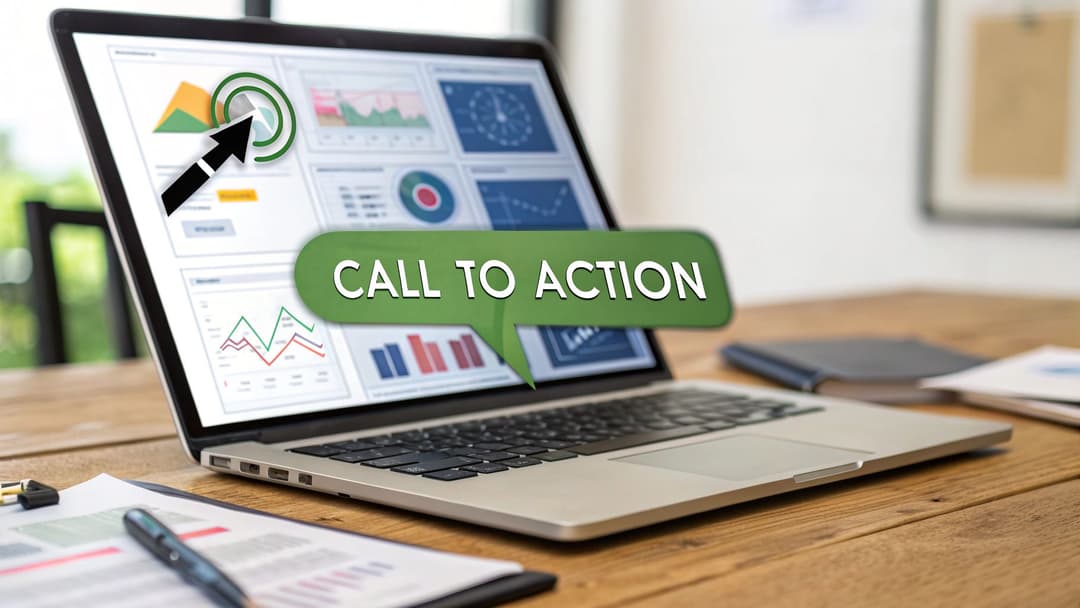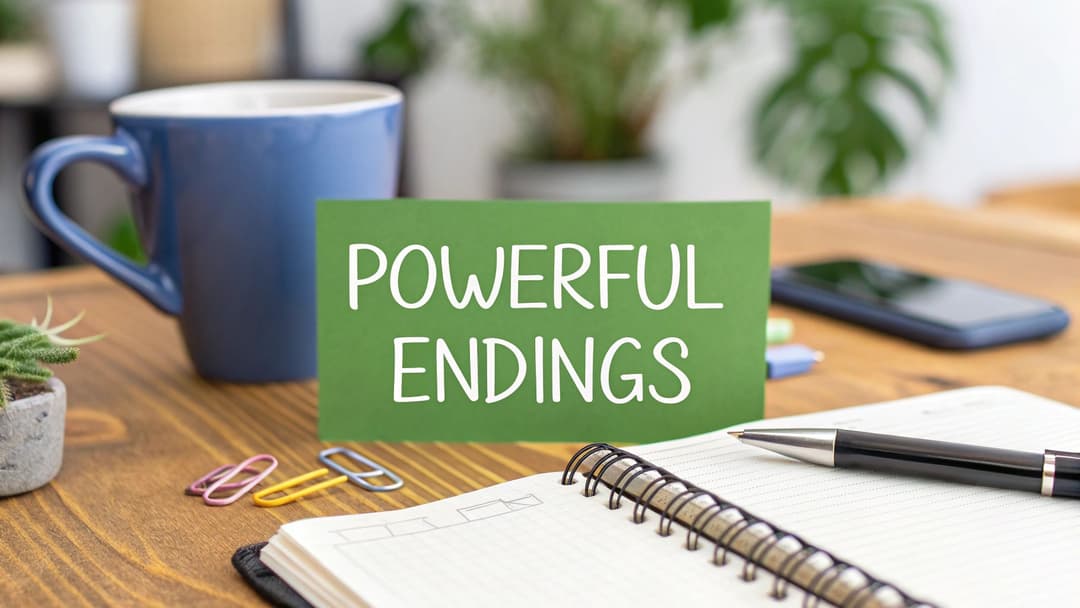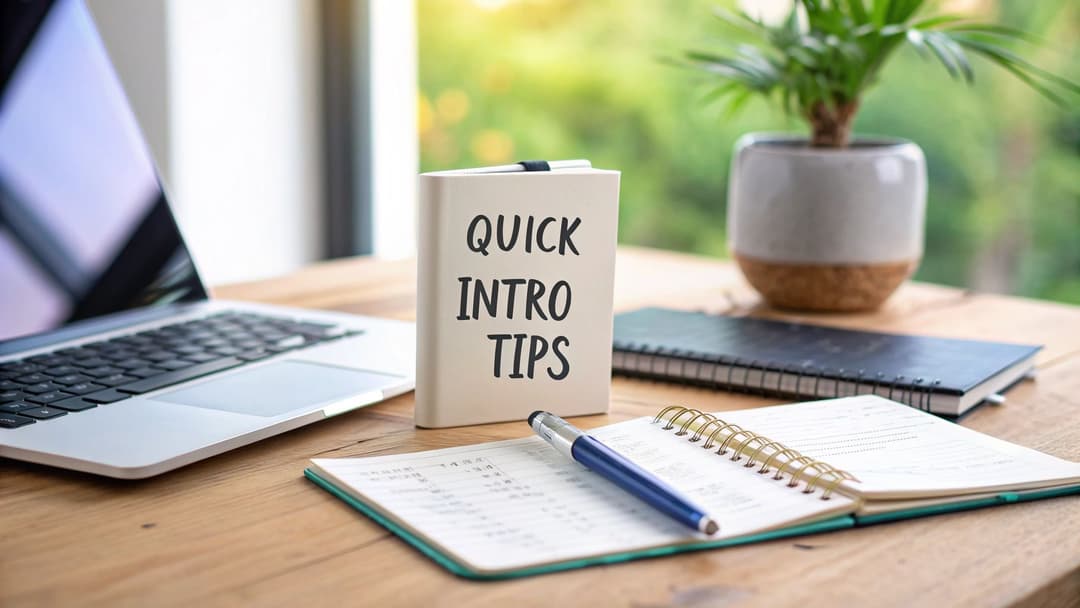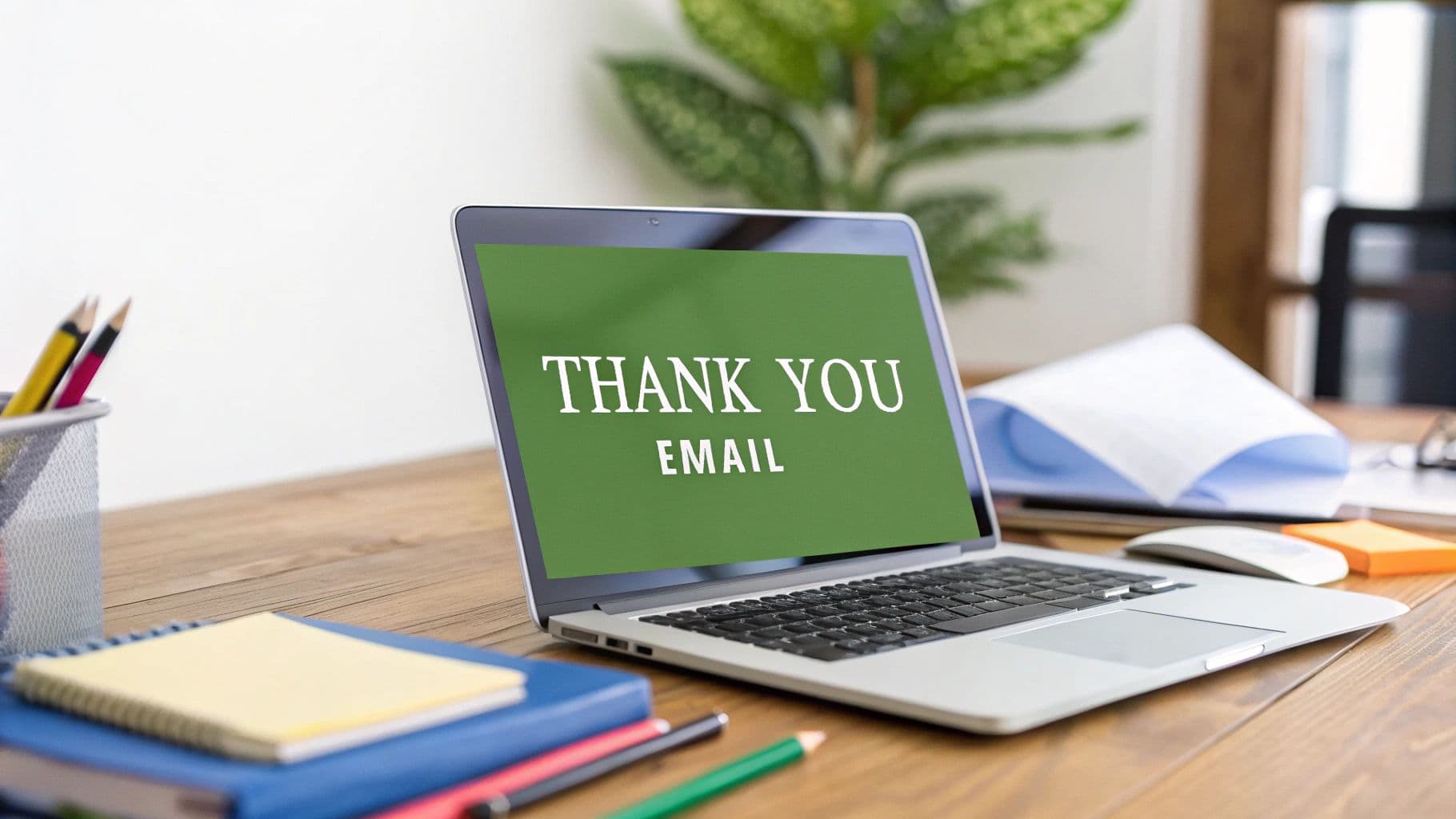
How to Write a Thank You Email That Gets Read
October 9, 2025
Writing a thank you email isn't just about good manners—it’s a strategic move that reinforces a great impression and keeps the conversation alive. The trick is to be prompt, personal, and specific. A standout thank you message skips the generic stuff and brings up a unique detail from your chat, making it memorable.
Why Most Thank You Emails Are Ignored
Let’s be real: the average inbox is a warzone for attention.
Most thank you emails land in the trash within seconds. Why? Because they’re forgettable. A simple "Thanks for your time" is polite, sure, but it does absolutely nothing to make you stand out from the crowd.
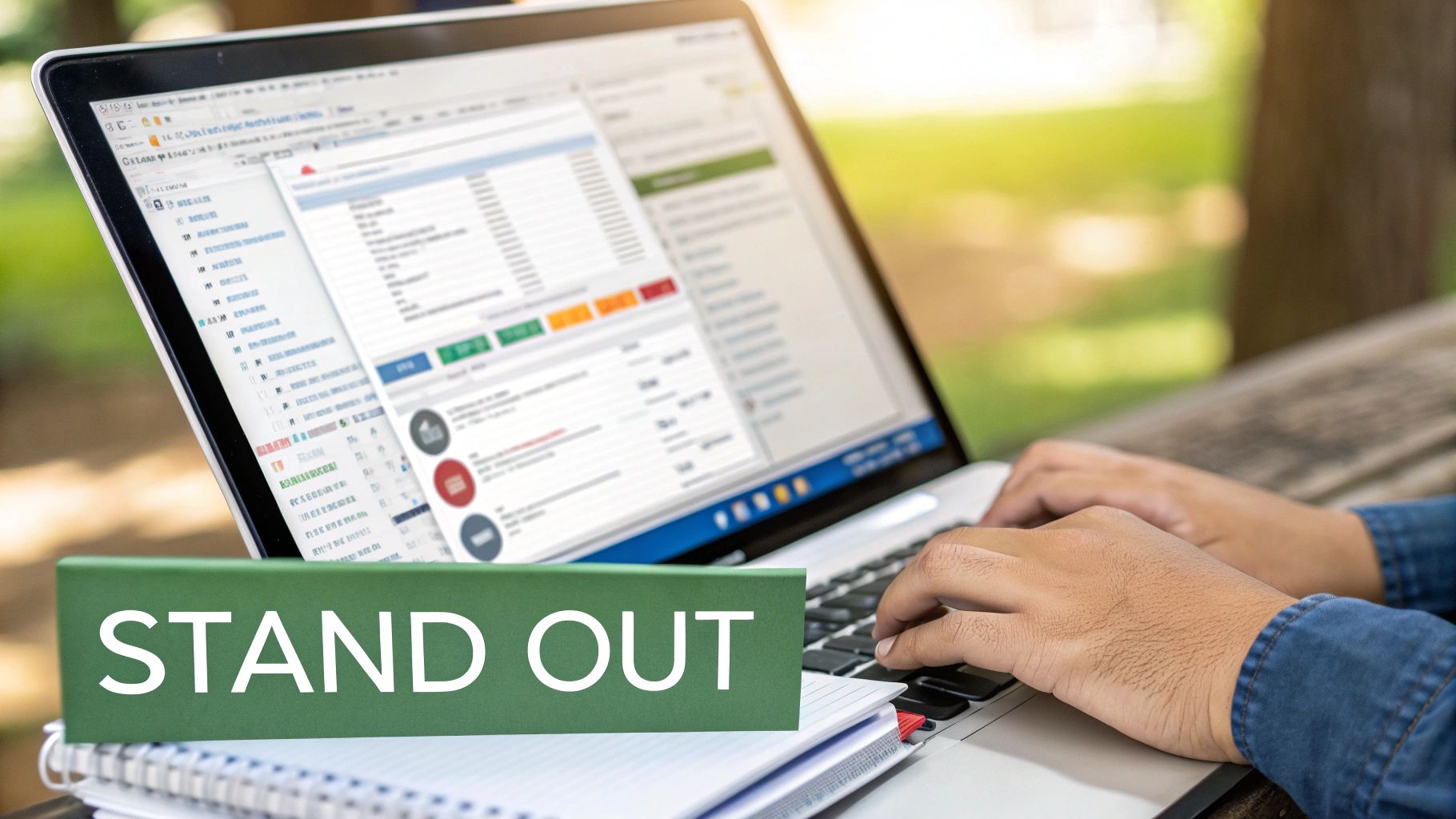
Sending a message like that is a huge missed opportunity. A well-crafted thank you email is more than a formality; it's a powerful tool. It can transform a polite gesture into a strategic follow-up that cements a new professional relationship or keeps you top-of-mind after a big meeting.
Beyond Basic Manners
Thinking of this email as just a courtesy is the first mistake people make. Its real power is in its ability to continue the conversation and remind someone of your value.
After a job interview, it’s your chance to reiterate your enthusiasm and touch on a key qualification you discussed. After a networking coffee, it strengthens that brand-new connection.
A truly effective follow-up does a few things at once:
- Shows You’re a Pro: It proves you're organized, appreciative, and understand professional etiquette.
- Reinforces Key Points: It gives you one last chance to highlight a specific skill or a great idea that came up.
- Makes You Memorable: A personalized note that references a unique part of your conversation is impossible to ignore.
The difference between a thank you email that gets a reply and one that gets deleted often comes down to one thing: specificity. Mentioning a piece of advice they gave, a shared interest, or a project detail proves you were actually listening.
Ultimately, learning how to write a great thank you email is about turning a passive gesture into an active career-building tool. It’s your secret weapon for leaving a lasting, positive impression.
Crafting a Subject Line That Actually Gets Opened
If your email never gets opened, it might as well not exist. The subject line is the gatekeeper—it’s the one thing that determines whether your thoughtful message gets read or lost in a sea of unopened emails.
Think about it: this is your very first impression after you've walked away from the interview or ended the call.
The goal here isn't to be clever; it's to be crystal clear. A busy professional is scanning their inbox for relevance, not poetry. Your subject line has one job: to instantly answer, "What is this and why should I open it?" Vague lines like "Following Up" or "Great Chat" are way too easy to ignore.
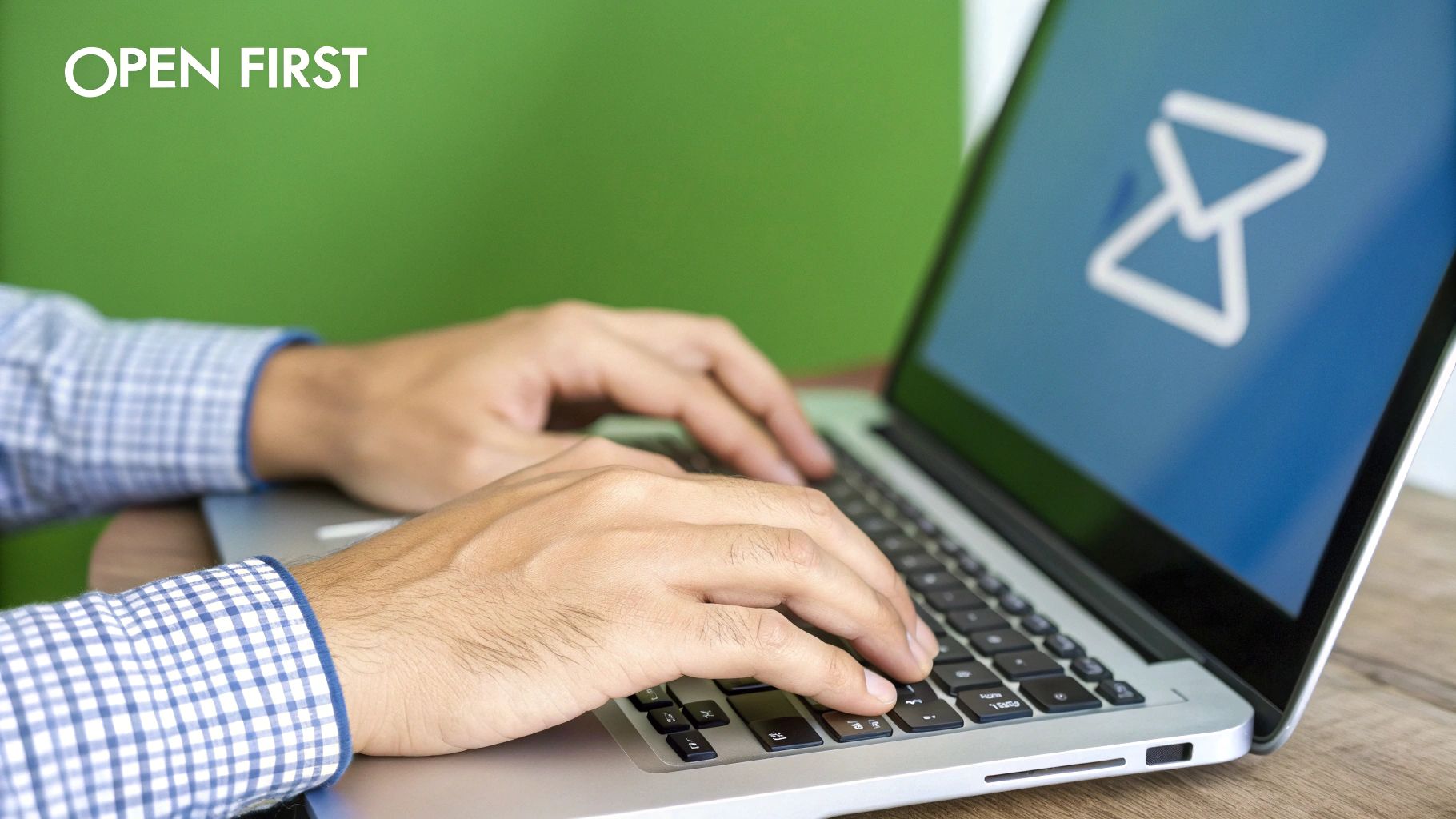
Instead, get straight to the point and give them context. This small detail ensures your email is recognized and, more importantly, prioritized.
Subject Line Formulas for Common Scenarios
Your subject line is basically a clear, helpful label. For something like a job interview, the aim is to be professional and easily searchable for a busy hiring manager.
For a Job Interview: "Thank You – [Job Title] Interview" is a classic for a good reason. It’s direct, professional, and has keywords the hiring manager will instantly recognize. For an extra touch of clarity, add your name: "Thank You – Michael Carter, Marketing Manager Interview."
After a Networking Coffee: Go for something warm but still professional. A simple "Great Connecting Today" or "Pleasure Meeting You" works perfectly. It’s friendly and jogs their memory about your conversation.
Following a Sales Call or Demo: Always tie it back to the business purpose. A subject like "Following Up on Our Demo Today" or "Thank You for Your Time – [Company Name]" is direct and makes it easy for them to categorize your email.
The best subject lines are concise, specific, and professional. They take all the guesswork out of it for the recipient, which is a courtesy in itself and a great signal of your communication skills.
Steer clear of overly casual language or emojis. They can come across as unprofessional and sometimes even trigger spam filters. For a deeper look at what works, check out these essential email subject line best practices to make sure your message always hits the mark.
Your goal is to make opening your email an easy, automatic decision.
Building an Email Body That Makes an Impact
You’ve got their attention with the subject line. Now what? The body of your thank you email is where you go from just being polite to being genuinely memorable. This is your chance to really solidify that connection you just made.
The trick is to prove you were actually listening.
Anyone can send a generic "thanks." But the real impact comes from bringing up specific details from your chat. Think back to a unique piece of advice they shared, a project you talked about, or even a shared hobby that came up.
Instead of saying, "I enjoyed our conversation," try something that shows you were paying attention. Something like, "I really appreciated your take on the future of AI in marketing—your insights on consumer behavior were incredibly helpful." See the difference?
Make It Personal and Specific
Your entire goal here is to show that the conversation stuck with you. A generic compliment feels empty, but a specific reference proves your gratitude is sincere. It makes the other person feel heard and respected, which goes a long way.
These are the little details that separate a decent email from a great one. If you want to get even better at this, our guide on professional email etiquette is packed with these kinds of subtle tips that make a huge difference.
And it's not just a nice-to-have. The data shows that personalization is what gets you a reply.
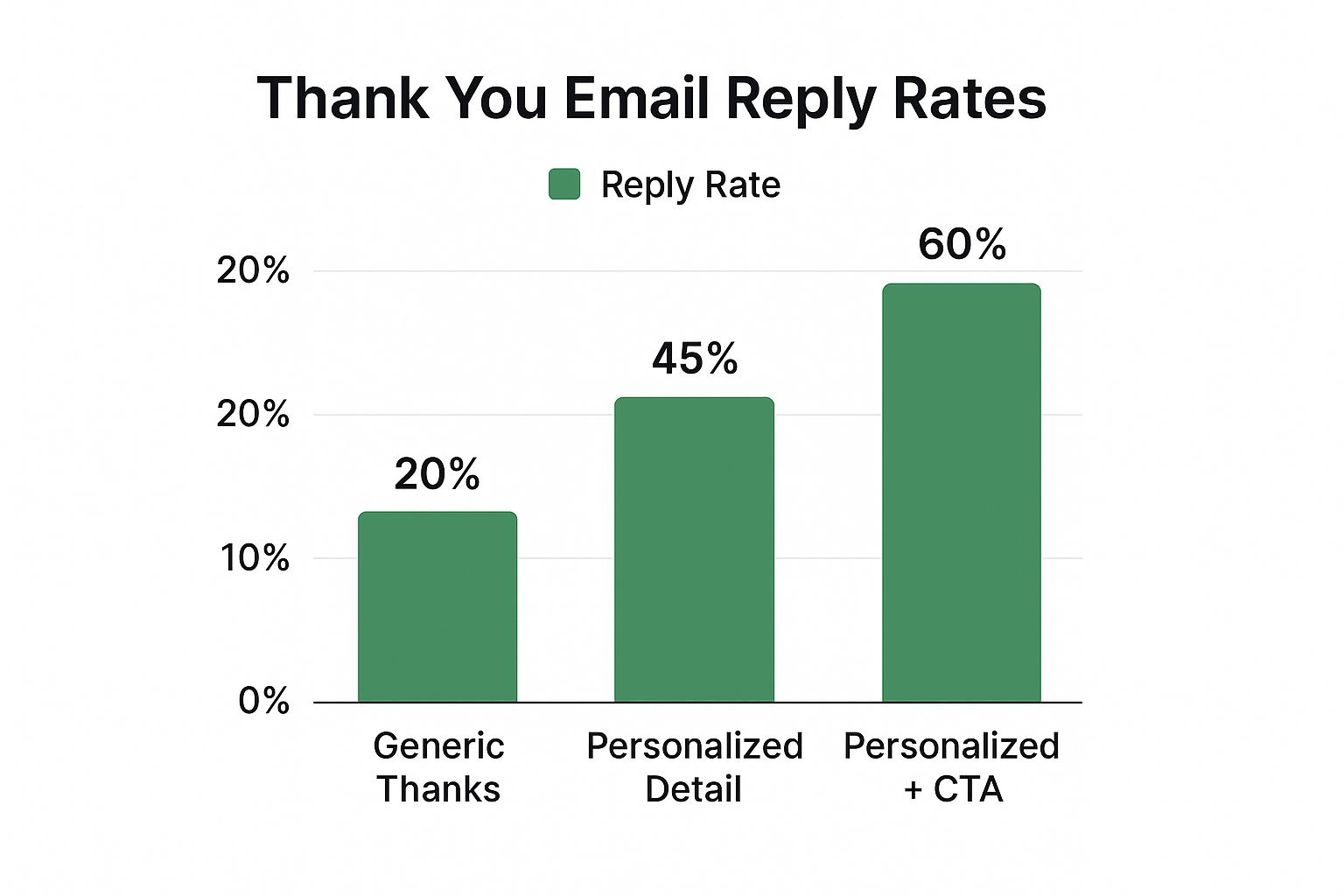
Just look at those numbers. Adding one specific detail from your conversation more than doubles the chance of getting a response. It turns a simple "thank you" into a real conversation.
Keep Your Message Concise and Focused
Okay, so personalization is key. But so is keeping it brief. A thank you email should be sharp, focused, and respectful of their time. Long, rambling paragraphs will just dilute your message and probably won't get read.
Aim for warm but direct. You want to get your point across without taking up their afternoon. Studies have found that emails between 50 and 125 words get the best reply rates. It’s the sweet spot—informative enough without being overwhelming.
A thank you email isn't the place to re-pitch yourself or attach your resume again. Its one job is to express gratitude and reinforce the positive connection you already built.
A short, powerful message shows you understand how professionals communicate. It's clean, easy to digest, and makes sure your main point—your appreciation—is what really shines through.
Choosing a Closing That Prompts a Reply
How you sign off your thank you email might feel like a tiny detail, but it carries more weight than you think. It's the last thing your recipient reads, and it can be the difference between getting a reply and getting archived.
Think of it as your final handshake. A weak closing can make an otherwise great email fall flat. While classics like "Sincerely" or "Best regards" are perfectly safe, they don't exactly invite a response. When your goal is to keep the conversation going, your sign-off needs a bit more strategic punch.
Selecting a Strategic Sign-Off
So, what's the right move? It all comes down to context. The closing you'd use for a post-interview thank you is going to be far more formal than a quick note to a colleague who bailed you out of a jam.
Interestingly, data backs up the power of gratitude in your closing line. A study on email response rates found that emails ending with "thanks in advance" got a reply 65.7% of the time. That narrowly beat out "thanks" (63.0%) and the more formal "thank you" (57.9%).
What’s really telling is that all three performed significantly better than emails without a grateful closing. A simple expression of thanks can boost your odds of a reply by around 36%. If you're curious, you can dig into the full email study for more insights.
Your sign-off is the last thing they read. Choosing one that is both professional and proactive keeps the door open for future communication, making it more than just a polite goodbye.
Let’s look at how different closings stack up.
Email Closing Effectiveness Comparison
The table below shows just how much impact your choice of closing has on getting a response, based on the study's findings. Notice how expressions of gratitude consistently outperform more neutral options.
| Email Closing Phrase | Average Response Rate |
|---|---|
| Thanks in advance | 65.7% |
| Thanks | 63.0% |
| Thank you | 57.9% |
| Cheers | 54.4% |
| Kind regards | 53.9% |
| Regards | 53.5% |
| Best regards | 52.9% |
| Best | 51.2% |
As you can see, a little gratitude goes a long way. It sets a positive, collaborative tone right at the end of your message.
Here are a few powerful options and when to use them:
- "Thanks again": This is warm and appreciative. It's perfect for when someone has already helped you, and you're genuinely expressing gratitude for their time or effort.
- "Best regards": A true classic. It's professional, safe, and works in almost any situation, especially more formal ones where you don't know the person well.
- "Looking forward to hearing from you": This one is more direct and clearly signals that you expect a response. Save this for when a next step is well-defined and you're waiting on their input.
Nail the Timing of Your Follow-Up
When you're trying to figure out how to write a great thank you email, when you send it is just as important as what you say. Wait too long, and your message loses its punch. You risk looking disorganized or, even worse, like the meeting wasn't a priority for you.
For job interviews, the gold standard is to get that email out within 24 hours. It’s a simple, powerful way to show you’re on the ball and genuinely interested. It keeps the positive impression you made top-of-mind for the interviewer while they're still making decisions.
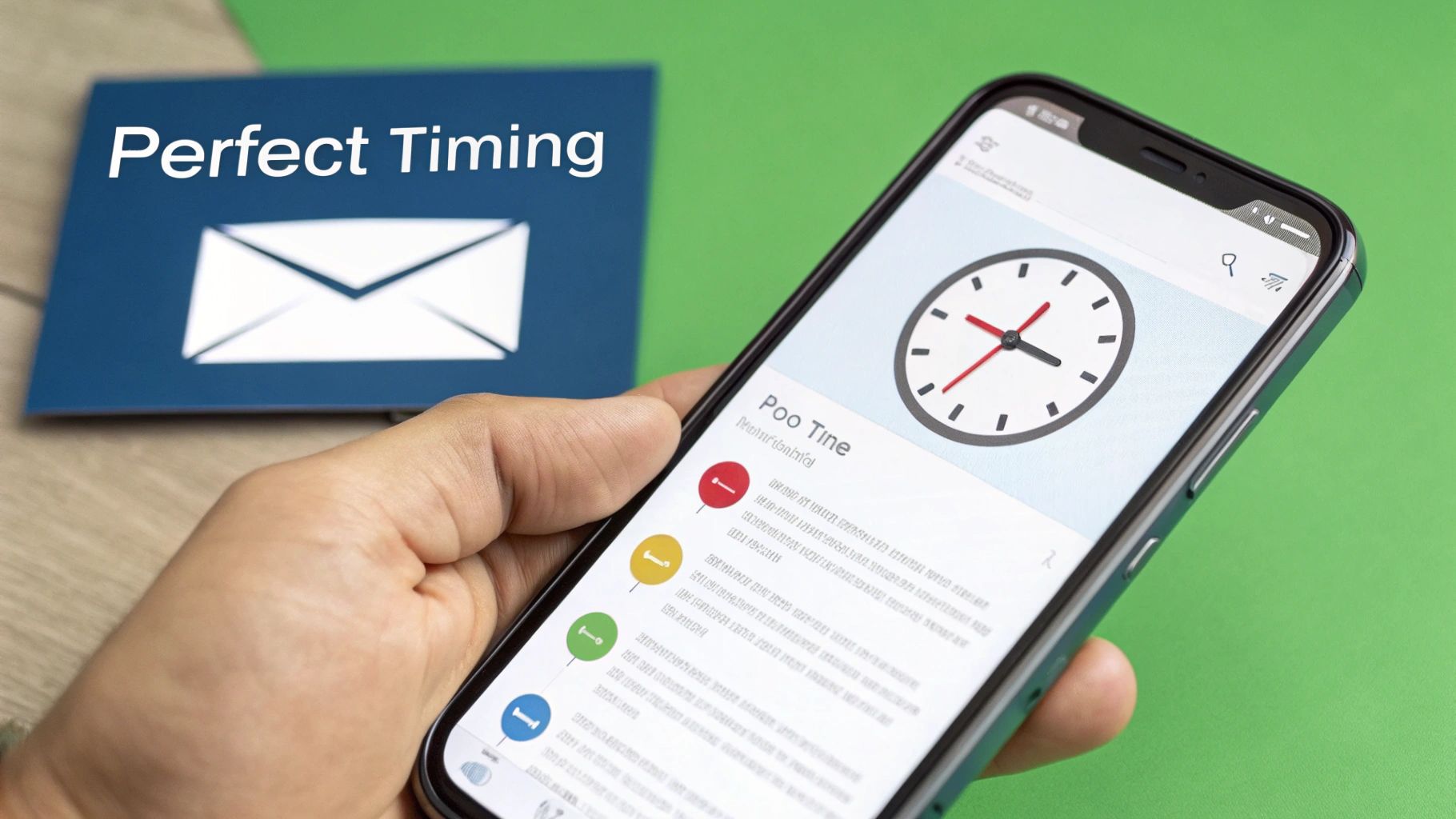
Promptness just works. While there isn't a hard stat connecting thank you notes to reply speed, we know that quick, courteous communication is a cornerstone of positive engagement. You can dig into some fascinating current email response time benchmarks to see just how fast the professional world moves.
Different Scenarios, Different Timelines
That 24-hour rule isn't set in stone for every situation. You can be a bit more flexible in other contexts, but the principle of being timely still holds true.
- After a networking coffee: A quick note that same day or the next morning is perfect. It helps solidify the connection while the conversation is still fresh in their mind.
- After getting advice from a mentor: A day or two is totally fine. It shows you’ve actually taken some time to think about their guidance.
- Following up on a client meeting: Sending a follow-up the same day can be a game-changer. It’s your chance to recap next steps and show your appreciation immediately.
Before you even think about hitting "send," check everything. Then check it again. Misspelling someone’s name or company is one of the fastest ways to kill the goodwill you've built. It screams "lack of attention to detail."
It's these small, diligent acts that separate a truly professional follow-up from one that feels like an afterthought. If you want to see how these principles work in other situations, we’ve put together a guide with a bunch of professional email examples.
At the end of the day, getting the timing right ensures your thoughtful message lands with maximum impact and strengthens the relationships you've worked so hard to build.
Some Common Questions About Thank You Emails
Sending the right message after a meeting or interview can feel like walking a tightrope. You want to sound grateful and professional without coming off as pushy or generic. When it comes to thank you emails, a few key questions always seem to pop up.
One of the biggest is about timing. My advice? Get it sent within 24 hours. It’s the sweet spot. This shows you’re on top of things and genuinely interested, all while the conversation is still fresh in their mind.
What If I Met With Multiple People?
This one’s a classic. You just wrapped up a panel interview with three different people. Do you send a single group email to save time?
Nope. Never.
Always take the extra few minutes to send a separate, personalized email to each person. Sure, the core of your message will be the same—you're thanking them for their time—but you need to tailor each one. Mention something specific you discussed with that individual. It proves you were listening and makes a much bigger impact than a generic copy-and-paste job.
Finding their email addresses can sometimes be tricky. The easiest route is to just ask the recruiter or HR contact who set up the meetings. If that’s not an option, a quick search on the company’s website or LinkedIn usually does the trick.
A handwritten note can feel like a nice, personal gesture, especially in more traditional industries. But it should never replace a timely email. In today's world, the speed of an email is simply expected.
That Post-Interview Email Is a Big Deal
The thank you note you send after an interview is probably the highest-stakes one you'll ever write. It’s not just about being polite; it’s one last chance to reinforce your interest and show them you’re the right person for the job.
It’s a strategic move that can help you stand out from other candidates. For a deeper dive into nailing this specific message, check out this guide on how to write a thank you email after an interview.
Ready to make sure every email you send—from thank yous to proposals—sounds polished and professional? Natural Write can help you refine your AI-generated drafts into clear, human-like text that always strikes the right tone. Transform your writing today at https://naturalwrite.com.
